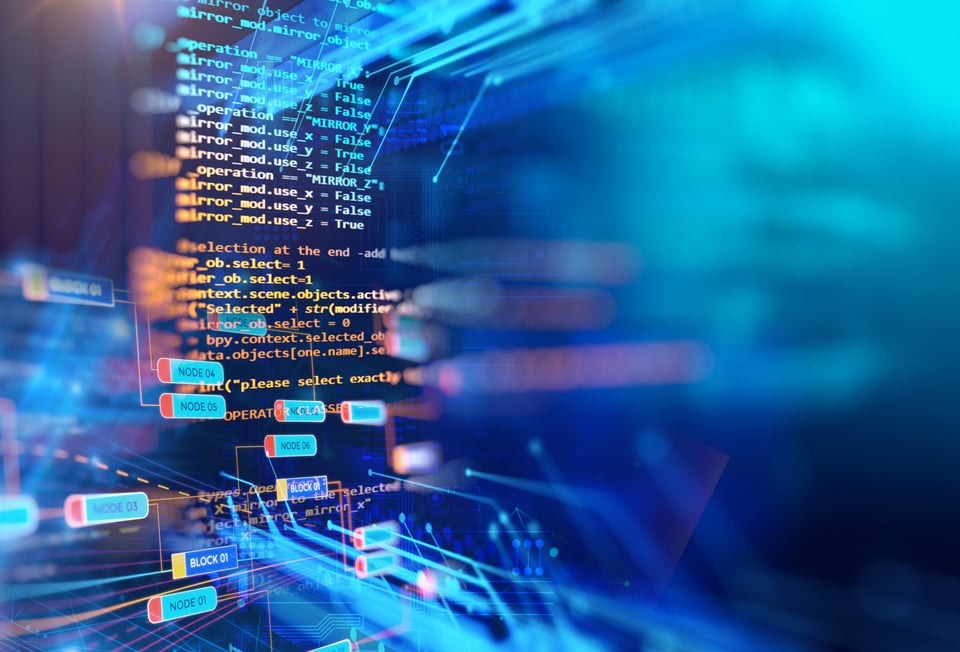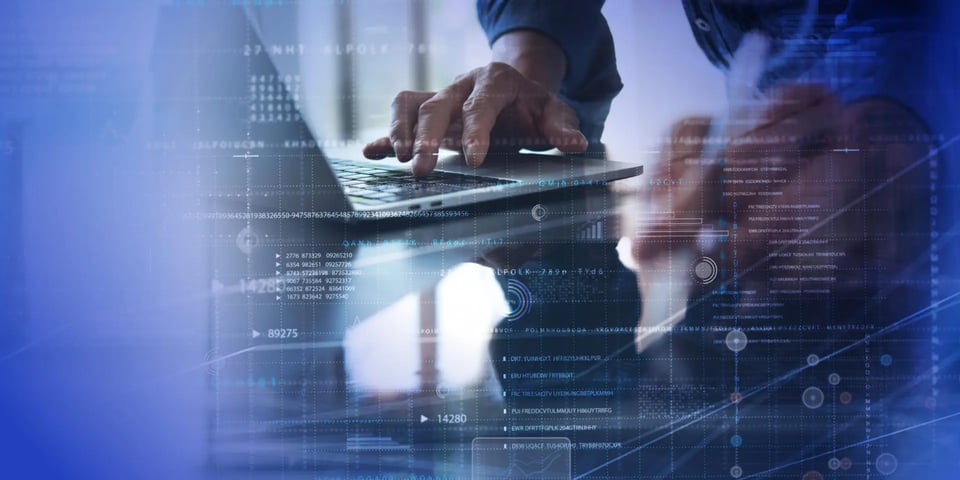by Charles Sybert –
Modern insurance companies must take advantage of the ever-evolving technology landscape to keep up with competition and become increasingly efficient. One of the industry-changing trends that is seeing accelerated adoption is the Internet of Things (IoT). IoT are miniature sensors worn by a person or installed on a physical asset such as a car or a home. These sensors provide real-time data, such as a person’s heart rate, a detection of moisture increase in a home due to a failed sump pump, or vehicle damage information as a result of collision. In 2010 there were 12.5 billion networked devices and in 2024 it is projected to be over 50 billion or 7 devices for every person on the planet. IoT will bring significant improvements but has many challenges to overcome to become fully integrated into insurance processing paradigm.
Using IoT to gain processing efficiency
When the IoT device detects a change or measurement, it stores and later transmits the data in a digital format to a data hub. This data can be ingested by a third party and perform actions ranging from notification of the user to set up a service call to updating a policy, to name a few.
Improved customer satisfaction
An insurance company’s interaction with its customers is mostly limited to contact at the time policy is purchased, review and payment of billing statements, and the occasional filing of a claim. During any of these interactions, a small slip up or setting wrong expectations can cause the customer’s view of the company to become negative and result to loss of their business. Nowadays, customer expectations have evolved and frictionless interactions such as chat features, automatic changes, and other improvements are the minimum.
The frictionless paradigm is a perfect fit for IoT technology. The IoT device can provide critical data such as the degree of damage to a car, notification of a possible pipe burst, and measurement of healthy activity that the insurance company can review. The insurance company can take automated actions such as setting up a body shop repair appointment, calling the customer to notify of a possible leak or reduce life insurance premium for working out. Customers are demanding an insurance partner that provides coverage and provides the necessary services to reduce the claim experience’s stress.
Reduced Claim costs
IoT can provide early notification of a possible claim or provide more exact details on the incurred damage. For example, the sensors on a car would detect the damage from the impact. Using this data in the predictive analysis model could project the extent of the damage and suggests a more exact reserve amount. If the car was in a minor bumper impact, the model might say only replace the bumper. If there was an impact on the engine compartment, the model may say it could be a total loss based on the model year and to expect soft tissue damage. This information would be invaluable to the adjuster in understanding the accident, providing comfort to the insured, and reducing overall fraud.
IoT can also prevent claims before they happen. Suppose a homeowner had an IoT sensor installed on a sump pump, the pump failed during a storm, and the backup pump started. The insurance company could notify the homeowner of the failure and the need to replace the pump. The notification would prevent flooding of the basement and the insureds hassle of clean up and claims processing.
Increased accuracy of risk pricing
John Hancock introduced the Vitality Program to its life insurance products where the insured wears a fitness tracker to monitor the health. Through this program, John Hancock found that its policyholders take nearly twice as many steps and logged more than 3 million healthy activities. The program has resulted in fewer hospitalizations and longer lives for the insured, reducing the overall life insurance risk. Another example is the drive applications from Allstate, State Farm, to name a few, that track the insured’s driving pattern through a smartphone to reward the customer for safe driving. These tracking applications provide the necessary data to provide real-time adjustments to the insured risk based on experience. The insureds will take extra effort to either improve driving or work out to reduce the risk exposure. No longer are insureds placed into large risk pools, but now they can be individually and accurately risk assessed.
Hurdles must be cleared to gain the benefits
Gaining access to personalized insights, most of the general public must embrace the idea of IoT, understanding the impact of a reduced risk pool, and ensuring differentiation amongst the competition.
Acceptance by the public
Today, a small portion of the public trades access to discounts for access to their data. However, for IoT to be powerful, the majority, if not all, will need to agree to provide access and agree to wear or install the sensors. In light of the ever-increasing identity theft occurrences, data protection acts both in the US and EU, and the question of who owns the data, this will be an enormous challenge to overcome. Many people who view providing this access as invasion of privacy and will not grant access. Market trends such as cars with built-in sensors, an increased number of people wearing Fitbits/ Apple Watches to track health, and a younger population that embrace technology as a part of daily life more so than the older generations will help overcome this obstacle.
Pricing high risks insureds
In insurance pricing today, the general population is placed into risk pools of like individuals to help spread the risk and associated claim costs. Tomorrow with the IoT capabilities, the risk pool will shrink to just one instead of many. The resulting increase of premiums could cause public outrage as the perception would be the insurance companies are using the individual’s data against them to drive profit. The various Departments of Insurance would most likely regulate the premium increases on high-risk insureds, impacting the ability to lower the premium for low-risk insureds.
How do you differentiate?
When IoT is generally accepted, all insurance companies will quickly look like another. They all will provide discounts for the sensor data; offer a similar service level and provide the same coverage level resulting in insurance becoming a commodity in the insured’s eyes. Differentiation will require a few immediate steps to ensure future separation from the competition.
The first is to identify partners now to provide access to the customers and have the technology to make IoT seamless and are willing to be innovative as a single purchase.
Suppose an insurance company, sump pump manufacturer, and IoT sensor technology jointly collaborated on a sump pump design. The new pump could provide the homeowner with a discount when the IoT connects to the insurance company. The insurance company lowers its risk exposure to backup coverages in exchange for the discount. As long as the system continues to work and the insured receives the discount, the insurance company will be sticky as the incentive to change is limited.
The second is to build alliances with IoT data brokers such as Apple Watch, Fitbit, and other IoT data owners. Gaining access will enable the insurance company to understand how the data is collected and build models. While the information is in its infancy, starting the designs early will provide the timeline to define the necessary infrastructure, processing, and data use. When the full IoT capabilities are realized, the insurance company will be ready to utilize the data insights.
Harness the power of IoT
Having access to the IoT data is meaningless unless the systems are set up to process and make decisions based on IoT. Implementing IoT will require an investment of technology and updating procedures to account for the uniqueness and volume of IoT data.
Data analysis services
Analyzing the terabytes of IoT data will require a reliable data analysis infrastructure with blazing ingestion and analysis speed. The effort is more than the typical data warehouse, but rather an entire system dedicated to IoT data as it is different from other insurance system transactional data sets. For example, a claim will have a change of reserves. However, IoT will have a readout of a person’s heart rate every minute, resulting in a volume difference. The recommendation is to start with a data lake to store the data in its native format upon receipt.
After receipt, the processing begins by extracting the data from the lake into a standardized format that is usable by an augmented analysis tool or AI-based data analytics. The model analysis must serve two purposes. The first is to identify trends in the data, which will assist in future product offerings, improved pricing, or areas for different coverage options.
The second is to create a set of actions to be performed based on the data. The step could range from an alert to the homeowner of a possible pipe burst, calling emergency services based on a heart rate using the data’s geolocation to adjust the premium for the risk. The models will need to be powerful enough to give insight and flexible to adapt to changes in the data trends.
Updates to core systems
The insurance industry is undergoing a renaissance in the core systems by using cloud-based technology, microservices, and APIs to access external data. IoT data will require two additional strategic enhancements, the ability to perform multiple endorsements or changes to existing data and the ability to run in a headless state.
Today’s modern policy systems can support frequent endorsements of a policy. However, using IoT, there will be a need to make multiple changes in a day or make adjustments in real-time pricing and track all of those changes. Suppose the insurance company offers coverage priced by the mile. In that case, the insurance company could price each mile differently based on the insured’s driving pattern using IoT data. In miles 1 – 3, the insured was over the limit, miles 4 – 6 had multiple hard breaks, all of which will require tracking, pricing, and reporting. Today’s systems are not designed to handle this frequency of data and adjustments.
The second will be to run in a headless state, which can take instructions from an external source and affect a transaction in the system. For example, if there was an accident, the model would predict the severity, provide details to set up the claim, and recommend the opening reserves. In straightforward claims such as windshield damage, the claims system could set up the claim, set up a provider to call the insured and make a payment without human intervention.
Complete Your User Experience with Seamlessly integrated IoT
The internet of things (IoT) is an emerging trend that improves the insurance company’s understanding and pricing of the risk while creating a frictionless experience for the insured for discounts and claims experience. There are some hurdles to clear, such as public acceptance and system updates such as building analytical models. These obstacles can easily be overcame as embracing technology and inclusion into daily life becomes a reality. The insurance companies that will succeed in this area will build a complete user experience that seamlessly integrates IoT into the coverage. The question is, are you ready to harness the power of IoT?
Contact RCG for a discussion of your digital transformation roadmap.




